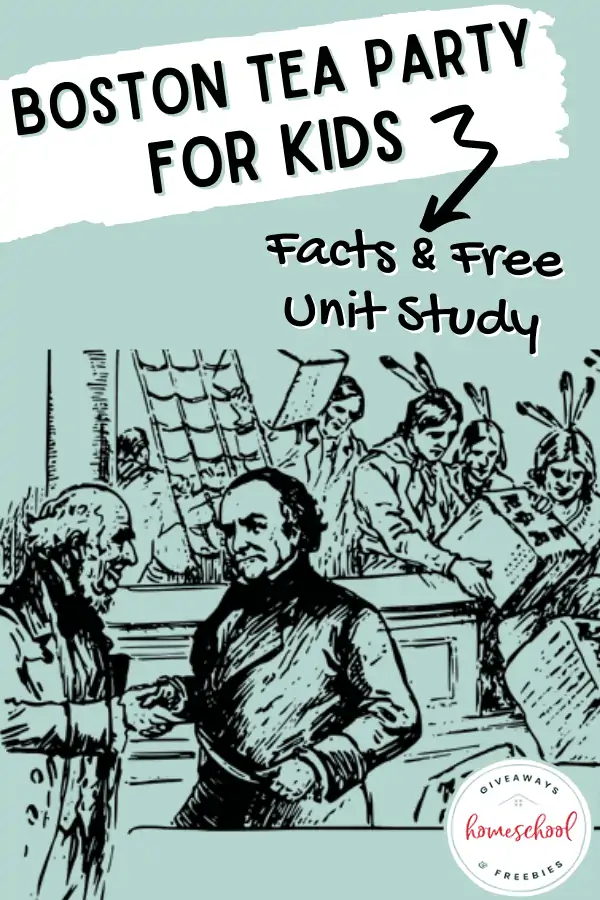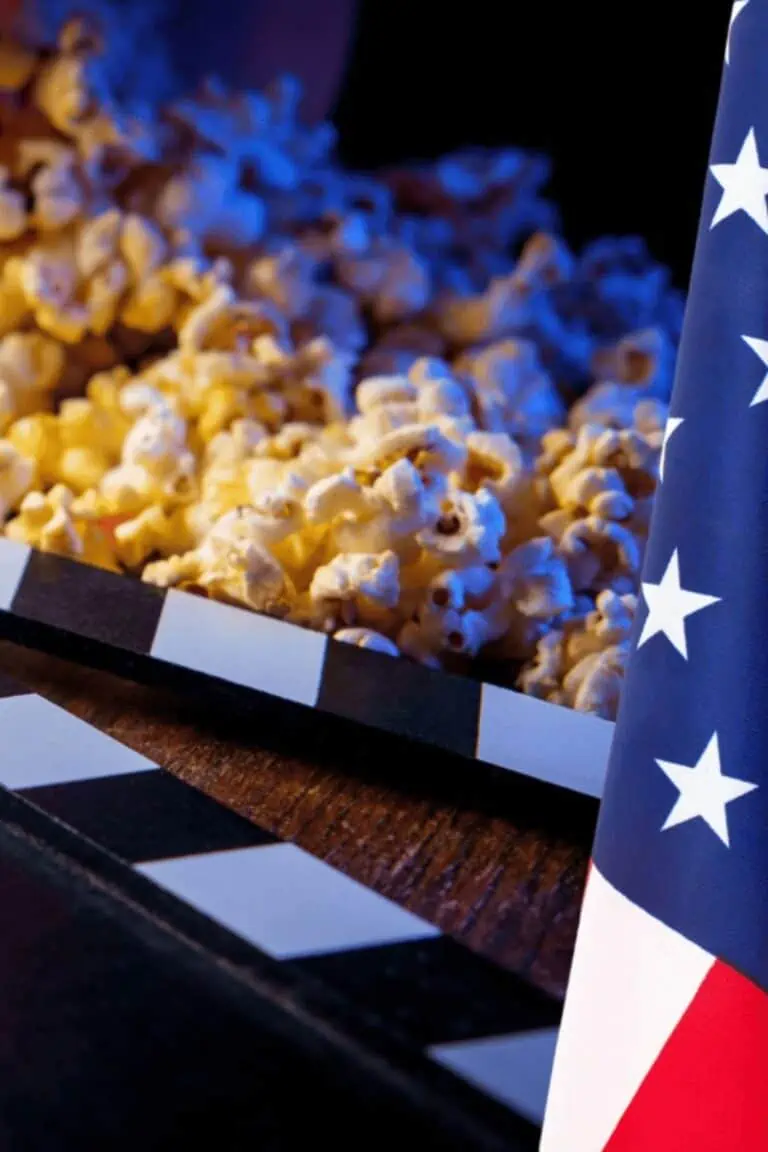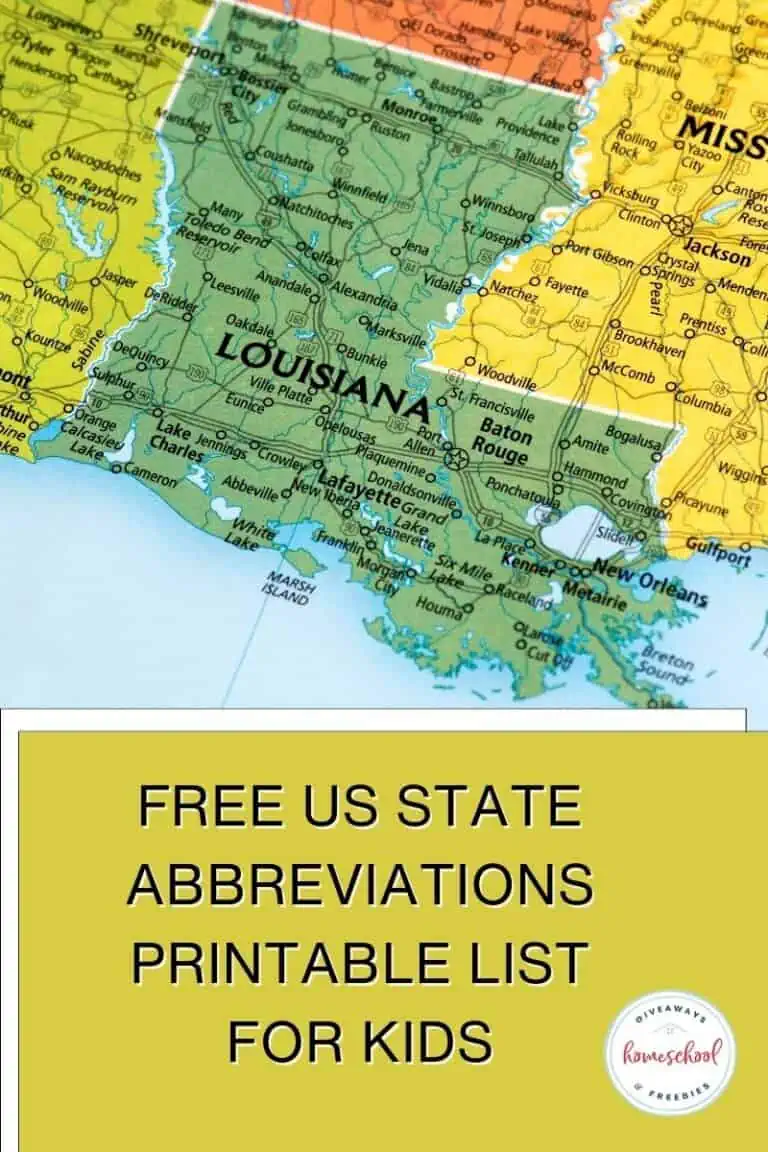What Was the Boston Tea Party? {Free Unit Study for Kids}
Published:
December 2, 2021

Contributor:
Carrie
Disclosure: This post may contain affiliate links, meaning if you decide to make a purchase via my links, I may earn a commission at no additional cost to you. See my disclosure for more info.
The Boston Tea Party happened in Boston Harbor on the night of December 16, 1773, and was a major moment in American history. Teach your kids about the Boston Tea Party and the events that led up to it with our free Boston Tea Party Unit Study download. Find it at the bottom of this post.
What Was the Boston Tea Party?
The Boston Tea Party happened in Boston Harbor on the night of December 16, 1773, and was a major moment in American history. In order to understand the history of the Boston Tea Party, what happened, and why, we need to back up to a little bit.
Seven Years War
In 1763, Great Britain was coming out of the French and Indian War in the North American colonies. They had faced battles with France in North America, Europe, and Canada. The war was also called the Seven Years War. It was the most recent in a string of four wars Britain and France had been involved in that started in 1689 concerning land in North America.
The Sugar Act
Fighting wars is expensive, and Britain needed to raise money for the government. In 1764, royal officials passed the Sugar Act, which taxed all refined sugar and molasses that the colonists tried to import from non-British Caribbean locations.
| Free Unit Study Download: Scroll to the bottom to gain access to this free printable Boston Tea Party Unit Study. |
The Quartering Act
In 1765, Britain passed the Quartering Act, which forced the colonists to support, at their own expense, the British troops stationed in the British colonies.
The Stamp Act
In 1765, Britain also passed the Stamp Act. The act required the colonists to buy special stamps for various types of printed materials including deeds, licenses, almanacs, and even newspapers. High taxes were hard on everyone, including American merchants, and the colonists were furious with Britain’s actions.
This was basically a tax, and they argued that since they weren’t represented in the British Parliament, Britain had no right to tax them. People rallied under the slogan of “no taxation without representation.”
American Colonists Fight Back
The American colonists fought back so hard that in 1766, Britain gave in and issued a repeal of the Stamp Act. But, as you can imagine, there were people in Britain who didn’t like the fact that a bunch of rebellious colonists had forced the mighty British empire to do anything.
Townshend Acts
Chancellor of the Exchequer Charles Townshend was particularly upset about it. So in 1767, he convinced the British Parliament to pass the Townshend Acts. This was a somewhat sideways way to tax the colonies without it looking as much like a tax.
These acts would charge a fee called a duty just on goods that the colonists imported. Britain also established a customs agency staffed by customs officials in Boston to collect the money and make sure it was collected in accordance with the law.
Now the colonists were required to pay a tax on all the glass, lead, paper, and crates of tea they imported, as well as other items. As you can imagine, these new British taxes didn’t make the colonists any happier than the old tax, and they protested again. Boston’s Faneuil Hall was a popular place for local men to gather for town meetings, and mass meetings were held at the Old South Meeting House.
Many people did what they could by not buying the British products. They made the resources they needed themselves, did without, or smuggled the goods in from Dutch traders. Unfortunately, some of the public protests turned violent, and a street fight the colonists referred to as the Boston Massacre resulted in the death of five people. The British Parliament backed off to a degree and withdrew all the Townshend duties except one – the tea tax.
The Tea Tax
Tea was big business in the colonies. Remember, there was no soda or anything like that in the early days of the country, and water was often unfit to drink without boiling. Some sources say colonists drank as much as 1.2 million pounds of tea each year, so taxing it was a huge money maker for the British government.
However, as the colonists continued smuggling tea shipments into the colonies or doing without, it hurt the business of the British East India Company, a major political and economic force in Britain. The powerful British company went to Parliament for help, so in 1773, Britain issued the Tea Act. The Tea Act resulted in the East India Company being able to sell its tea cheaper than the smuggled tea.
The colonists were furious. The East India Company had tea agents in the colonies who were responsible to receive the British tea ships and sell the boxes of tea for the East India Company. In several places including New York City and Philadelphia, the colonists pressured the colonial agents to resign. In Boston, colonists tried to force the East India Company’s ships to leave Boston Harbor, but the royal governor, Massachusetts Governor Thomas Hutchinson, refused to let them leave.
The Boston Tea Party
On December 16, 1773, a group of colonists dressed as Mohawk Indians boarded the Dartmouth, Eleanor, and Beaver, the three East India Company ships at Griffin’s Wharf in Boston Harbor, and destroyed more than 300 chests of tea (more than 90,000 lbs. or 45 tons of tea), throwing them overboard. Being dressed as Native Americans helped disguise their identity (as they were certain to be hunted by the British).
What Was Destroyed
The colonists did not sink the British ships or recklessly destroy other property. Nothing except what was connected to the tea was destroyed, no one was hurt, and it is said that the colonists even swept the ships’ decks before they left.
They were there to make one specific point, not to loot everything in sight. Not all of the colonists, even among those who supported the patriotic cause, agreed that the Boston Tea Party was the right way to make a point, however. George Washington supported the American cause but not the destruction of property. Benjamin Franklin offered to pay for the East India Company tea. Some argued that destroying private property, including British goods, was wrong, no matter the reason.
Results of the Act of Disobedience
The contents of the tea chests were worth around £18,000, and Britain’s King George III was furious at this act of defiance. British authorities charged several leaders with crimes including Samuel Adams and John Hancock, even though they couldn’t prove either man was involved. Instead of addressing the root cause of the issue – taxation without representation – Britain retaliated by punishing New England and all of the colonies for the destruction of the containers of tea through the Intolerable Acts (the British called them the Coercive Acts).
The harsh treatment of the colonies and especially Massachusetts further united the colonies in their resistance, leading to the First Continental Congress, and eventually, to the American Revolution and American independence.
Your kids can learn more about the Boston Tea Party while sharpening their handwriting skills with this fun Boston Tea Party Coloring Book. It combines engaging coloring pages with short sentences to trace in print or cursive all about the Boston Tea Party. Or go deeper into the story of the American Revolution with a set of coloring books with copywork for your elementary learners.
Free Boston Tea Party Unit Study
Use our free unit study download to teach about the Bill of Rights in your homeschool. Includes facts and copywork for the first ten amendments. Scroll down to learn how to gain access.









